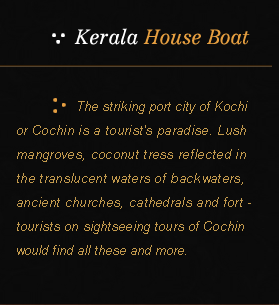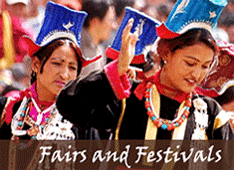Home > Golden Triangle Tour > Golden Triangle with Haridwar & Rishikesh

Duration : 11 Days & 10 Nights
Location : Delhi – Jaipur – Agra – Delhi – Haridwar – Rishikesh – Delhi.
Location : Delhi – Jaipur – Agra – Delhi – Haridwar – Rishikesh – Delhi.
Day 01
Delhi Arrival:
COMPANY REPRESENTATIVE will receive you on arrival at the DELHI AIRPORT and transfer to your hotel.
DELHI, the capital of kingdoms and empires is now a sprawling metropolis with a fascinating blend of the past and the present. It is a perfect introduction to the composite culture of an ancient land. A window to the kaleidoscope - that is India.
Overnight will be at Delhi.
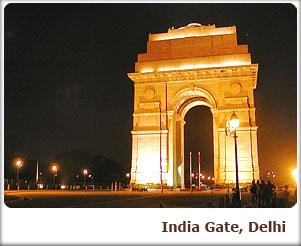 Day 02
Day 02
Delhi:
After breakfast proceed for a day sightseeing tour of the city.
The city is dotted with historic monuments that are the most popular tourist attractions in Delhi. Apart from the monuments, there are museums, markets, gardens and eating joints that you can visit on your tour of Delhi. Some of the important sightseeing places in Delhi are given below.
INDIA GATE: It is the war memorial dedicated to Indian soldiers, who died during World War I. The name of many soldiers who died during World War I is inscribed on its wall. Edward Lutyens, the man who planned and built New Delhi, designed India Gate. Almost every foreign tourist visits the monument. 'Amar Jawan Jyoti', the eternal flame is added later. The eternal flame runs on gas and is a tribute to soldiers who lost their lives in the service of the nation.
RED FORT: Located in Old Delhi, the Red Fort or Lal Quila is a popular tourist attraction in Delhi. The fort was built by the Mughal emperor Shah Jahan in 1648, when he moved his capital from Agra to Delhi. The construction of the Fort started in 1638 and it was completed 10 years later in 1648. Some of the important spots inside the Red Fort include royal baths or Shahi hamams, Shahi Burj, Moti Masjid or the Pearl Mosque, Diwan-e-Aam and Diwan-e-Khas.
JAMA MASJID: The largest mosque in India, the Jama Masjid was built by Shah Jahan 1656 AD. About 5,000 laborers and craftsmen worked for six years to complete the monument. The mosque can accommodate about 25,000 people. The mosque is located in the old Delhi. The domes are built in white marble. The prayer hall of the mosque has 260 pillars.
OLD FORT: Old Fort or Purana Quila as it is called is located near Pragati Maidan on the Mathura Road. You can club a visit to the Old Fort with your tour of Red Fort and Jama Masjid as the three monuments are located in Old Delhi and are not too far from one another. Humanyun’s started the construction of the fort in 1533 AD, but before the completion of the fort, Sher Shah Suri defeated him and captured Delhi. Sher Shah Suri completed the fort and named it -Shergah. He added many structures to the fort, of which Qila-I-Kuhna Mosque and Sher Mandal are worth mentioning. In 1555, Humanyun’s re-captured Delhi and converted Sher Mandal into a library.
HUMANYUN’S TOMB: Humanyun’s Tomb is mausoleum of the Mughal emperor Humanyun’s. Bega Begum also known as Haji Begum, wife of Humayun constructed the mausoleum for her husband. The tomb was built between 1562 and 1572 AD. The tomb was designed by Mirak Mirza Ghiyuth.
QUTAB MINAR: The construction of the Qutab Minar was stated by Qutub-ud-din Aibak in 1199 AD but he died before completing it. His son-in-law and successor Iltutmish completed the construction of the building. Qutab Minar is located in Meharauli.
LOTUS TEMPLE: Also known as the Bahai Temple, the monument was opened to public only in 1986. Located near Nehru Place, the Lotus Temple is designed like a lotus flower. If you are looking for some moments of peace and tranquility in the crowded city, Lotus Temple is the ideal place to visit.
Apart from the above-mentioned sightseeing options, there are various other tourist attractions that you can visit on your tour of Delhi. Some other sightseeing places in Delhi include Lodi Gardens, National Museum, Jantar Mantar, Dilli Haat and the Garden of Five Senses.
Overnight will be at Delhi.
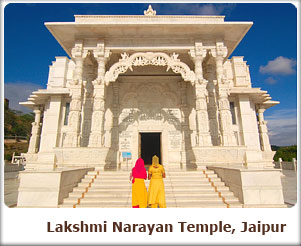 Day 03
Day 03
Delhi – Jaipur:
By Road 260Kms/05hrs
Drive to Jaipur after leisurely breakfast.
Jaipur is the capital of the state of Rajasthan a romantic realm of resplendent palaces, mighty fortresses and regal Maharajahs that lies in the western deserts and is an utterly unique part of India. Proudly belonging to the KSHATRIYA warrior caste and fiercely independent, the Rajput princes made fearsome foes. However, many of them realized that to maintain their wealth and authority locally, it was expedient to proclaim allegiance to the central power. Thus, many enjoyed a privileged position under the Mughal emperors and also the British Raj that followed.
The bustling Rajasthan capital of Jaipur takes its name from its venerated founder Jai Singh II, who was given the title Sawai Maharaja by the Mughal. Literally translated this would mean ’one and a quarter’, suggesting that the Mughal thought this emperor to be more valuable than just ‘one’. Jaipur is known as the ’Pink City’ on account of the distinctive colour of its buildings. This did not, however, form part of the original plan, but dates back to 1856, when the city was given a wash of pink in honor of a State Visit from Prince Albert.
This evening, visit the Birla Temple to learn more about the fascinating religious life of Jaipur. The marble structure, built as recently as 1985, houses ornate statues including one of Lakshmi (goddess of Wealth and Beauty) and Narayan dressed in gaudy robes, representing a Hindu vision of heavenly luxury. Carvings in the temple and on pillars supporting the covered walkways include images of the Hindu pantheon, as well as Jesus, the Blessed Virgin Mary and St Francis of Assisi. Your visit will coincide with the AARTI Ceremony, which involves oil lamps being lit and waved, in order to awake and invoke the deity.
Enjoy the experience and spend night at Jaipur.
Day 04
Jaipur:
After breakfast drive to Amber Palace. Enjoy Elephant Back ascent to the Fort.
AMER PALACE & FORT: Amer Fort and Palace was originally built by Raja Man Singh and subsequently developed by Sawai Jai Singh. The major attractions are Sheela Devi Temple, Sheesh Mahal (Hall of mirrors), Jai Garh Fort a few kilometers from the city centre was built for the defence of the town and has one of the world’s biggest cannons on wheels and a rich collection of arms and weapons.
Continue city sightseeing.
HAWA MAHAL (PALACE OF WINDS): Hawa Mahal is the most strikingly designed monument in Jaipur. Built by the Poet-King Sawai Pratap Singh in 1799, the Hawa Mahal is centrally located and is multiniched five storey high back view of the compled. It was conceived to provide an adequate vantage position behind delicate stone-carved jali, screens for the palace women to watch the royal processions passing through the Bazar below without being seen by outsiders. The Top of the palace affords a beautiful view of the city. A small archaeological museum is yet another attraction in the palace.
JAL MAHAL: The Jal Mahal Palace, Jaipur is noted for its intricate architecture. The Palace was developed as a pleasure spot. It was used for the royal duck shooting parties. On the road to Amber at a distance of 6.5 Kms from Jaipur are the cenotaphs of the royal family. A causeway leads to Jal Mahal Palace situated in the middle of Man Sagar Lake, opposite the cenotaphs. The first four floors of this building is under water, only the top floor remains outside. One can have a wonderful view of the lake and the palace from Nahar Garh Fort Built in 1799, the palace is now abandoned, but reasonably well preserved. In the monsoons, it looks particularly startling with its red sandstone set against the water hyacinth filled lake.
THE CITY PALACE: The city Palace is a historic landmark. The Carved arches are supported by grey-white marble columns studded with floral motifs in gold and colored stones. Two elephants carved in marble, guard the entrance, where retainers whose families have served generations of the rulers are at hand, to serve as guides.
JANTAR MANTAR: Jantar Mantar is one of Sawai Jai Singh’s five remarkable observatories. Constructed with stone and marble its compled instruments, whose setting and shapes are precisely and scientifically designed, represent the high-points of medieval Indian Astronomy. The two Ram Yantras used for gauging altitudes are unique in their isolation. This is the largest of five observatories founded by Sawai Jai Singh-II in various parts of the country.
This evening is free for you to relax shop or explore independently. Shopping is superb in Jaipur, particularly for gold and silver jewellery, pottery, tie-dye materials, silk, saris, wooden handicrafts and carpets.
Overnight will be at Jaipur.
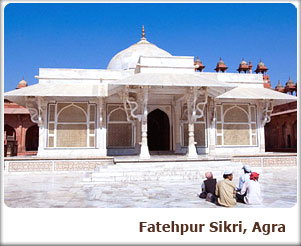 Day 05
Day 05
Jaipur – Fatehpur Sikri – Agra:
By Road 265kms/05hrs
Breakfast will be at hotel.
Drive to Agra visiting Fatehpur Sikri enroute.
FATEHPUR SIKRI – THE CITY OF VICTORY: 37 Kms from the city of Agra, stands Fatehpur Sikri, Akbar’s capital. Full credit goes to the Archeological Survey of India for this perfectly preserved example of a Mughal city at the height of the empire’s splendor. It is an attraction no visitor to Agra should miss. This sprawling structure is made of red sandstone and combines both Hindu and Mughal architecture. This walled city contains the mausoleum of the Sufi fakir, Saleem Chisti who is said to have granted Akbar and his Hindu queen Jodhabai their wish for a son. The main entrance to Fatehpur Sikri is through the 175 feet Buland Darwaza, the highest gateway in the world. It was built by Akbar to commemorate his victory over Khandesh in Gujarat. The Panch Mahal is a five-storeyed tower, the highest point in Fatehpur Sikri. This extremely airy tower is supposed to have been used by one of the emperor's many queens.
Reach Agra and check into the hotel.
AGRA: Two great Mughal monarchs, Akbar and Shah Jahan, transformed the little village of Agra into a befitting second capital of the Mughal Empire – giving it the name Dar-ul-Khilafat {seat of the Emperor}. Today a visitor to Agra is caught up in a world of contrasting edifices, of red sandstone and white marble, narrow galleys and quaint buggies, and that irresistible charm that this favorite city of the Mughals still retains. It is not surprising, that modern Agra still reflects its Mughal heritage most conspicuously. A walk down the narrow bustling streets of the city will introduce the visitor to the wafting aroma of Mughlai cuisine.
Overnight stay will be at Agra.
Day 06
Agra:
After breakfast proceed for day sightseeing of Agra.
THE TAJ MAHAL – AN EMPEROR’S LAMENT: Agra is the city of the Taj Mahal. It is a sublime experience of the greatest love story ever told. Today India's most fascinating and beautiful masterpiece, this perfectly symmetrical edifice is set amidst landscaped gardens on the banks of the Yamuna River. The Taj was built by the Mughal Emperor Shahjahan as a memorial to his wife, Mumtaz Mahal. After her untimely death, Shah Jahan had her mortal remains buried in this mausoleum. And after his own demise he was placed to rest next to his beloved queen in the same mausoleum. Under the dome, below the ground level, in a dimly lit chamber, lie the mortal remains of Shahjahan and his beloved queen Mumtaz, reminding the world of their undying love. The Taj remains closed for visitors on Friday
AGRA FORT – ARCHITECTURAL WONDER IN STONE: Within a radius of 3 kilometers, on the banks of the river Yamuna raises the crescent like Agra Fort. Designed and built by Akbar in 1565 A.D., the fort is surrounded by a 70 feet high wall. It houses the beautiful Pearl Mosque and numerous palaces including the Jahangir Mahal, Diwan-i-Khas, Diwan-i-Am and Moti Masjid. Later it was used by his son Jahangir also as the seat of power. Shahjahan modeled his creation, the Red Fort at Delhi on this fort. The Agra fort happens to be on the same bank of the river Yamuna as the Taj Mahal which is visible in all its beauty from one side of the fort. So very ironically, Shahjahan, a prisoner of his son Aurangzeb in his old age was put in a cell from where he could gaze at the Taj Mahal at a distance, from his cell in the Agra Fort.
The fort has four gates and is enclosed by a double barricaded wall of red sand stone. Many buildings were constructed within the fort of which very few remain till date. One of the most significant ones is the multi storied Jahangir Mahal built by Akbar for his wife Jodha Bai. The Mahal is reached through an impressive gateway and its inner courtyard consists of beautiful halls, profuse carvings on stone, exquisitely carved heavy brackets, piers and cross beams.
SIKANDRA: Sikandra, 10 Kms North West of Agra, is the final resting place of Emperor Akbar. The Tomb of Akbar shows an interesting fusion of Hindu and Mughal architecture reflecting the spirit of the Mughal Emperor Akbar. Akbar began the construction of his own garden mausoleum during his lifetime, a red sandstone structure in a char-Bagh meaning 4-square formal garden.
ITMAD – UL – DAULAH’A TOMB: This tomb was erected by Nur Jahan in sweet memory of her father Ghiasud-Din-Beg between 1622-1628 A.D. This white marble structure of the pre-Taj era though smaller is often considered equal if not better to the great one itself.
Overnight will be at Agra.
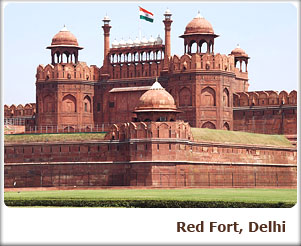 Day 07
Day 07
Agra – Delhi:
By Road 202Kms/04hrs
Delhi - Haridwar
By Train
Train Name : Jan Shatabdi
Train Number : 2055
Departure : 1525 hrs
Arrival : 1930 hrs
Breakfast will be at the hotel.
Drive to Delhi railway station to board train for Haridwar. Reach Haridwar and check into the hotel.
Haridwar or 'the Gateway to the Gods' is one of the seven holiest places according to Hindu mythology, as the Gods are believed to have left their footprints in Haridwar. Haridwar represents the gateway to the Himalayan pilgrimage shrines of Badrinath and Kedarnath. The pilgrimage to the Himalayan shrines begins only when the sun reaches the zodiac sign of Aries. Haridwar is also the site of celebration of the Kumbha Mela, once in twelve years, when Jupiter transits to the zodiac sign of Aquarius. The five sacred bathing spots in Haridwar are Gangadwara, Kankhal, Nila Parvata, Bilwa Theertha and Kusavarta. The main ghat at Haridwar is known as Hari-ki-Pairi (known for a footprint of Vishnu on a stone in a wall
Haridwar - gateway to the four pilgrimages in the Uttrakhand region is located on the foot hills of Shivaliks. It is on the banks of River Ganga. The Ganga leaves the mountains and enters the plains with Haridwar being the first major town on the plains. Though the Ganges does not lose its rapids completely nevertheless it becomes very quite and calm here. The water is clean and people prefer taking bath on the numerous Ghats built on the river shores. It is said that taking bath here purifies the soul and opens the way for the ultimate freedom, Nirvana.
Overnight will be at Haridwar.
Day 08
Haridwar:
After breakfast proceed for the sightseeing.
Har Ki Pauri: This ghat is one of the most sacred Ghats in India. People say that this ghat was built by Vikramaditya in memory of his brother Bhartrihari. This ghat is also known as Brahmakund. In the evening a Maha Aarti is performed on this ghat. It is an event which is a must, not be missed by any visitor.
Mansa Devi: This temple is located on top of a hill called the Bilwa Parvat. The temple can be reached by the rope way or one can take the normal trekking route to the top. The top of the hill gives you an excellent view of Haridwar.
Daksha Mahadev Temple: Four Kms from Haridwar is a town called Kankhal. Mythology says that the king of this place King Daksha Prajapati performed a yagya. His daughter, Sati was married to Lord Shiva. But Daksha was not happy with this marriage and did not invite Shiva-Sati in the Yagya. But Sati came and was insulted by her father. She could not take the insult and burnt herself in the yagya kund. On hearing this followers of Shiva killed Daksha. But later Mahadev (Shiva) brought Daksha to life. The Daksha temple is an attribute to this legend. This place is one of the five sacred places in Haridwar.
Chandi Devi Temple: This temple is on the top of a hill called the Neel Parvat which is on the other side of the river Ganga. The temple was constructed by the King of Kashmir, Suchat Singh, in 1929 AD. Chandi Devi is a three km trek from the Chandi Ghat.
Sapt Rishi: At one place Ganga divides herself into seven small streams. This place is known as the Sapt Rishi and provides a very pleasing sight.
Overnight will be at Haridwar.
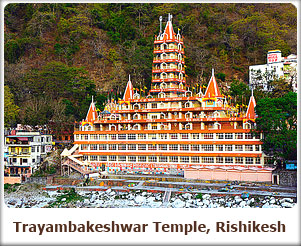 Day 09
Day 09
Haridwar – Excursion to Rishikesh:
After breakfast proceed for an excursion to Rishikesh.
Situated 24 Km upstream from Haridwar, at the confluence of the Chandrabhaga and Ganga, Rishikesh has long been a spiritual Centre. It is said that the sage Raibhya Rishi did severe penance here and as a reward, God appeared to him in the form of Hrishikesh, hence the name. Rishikesh has numerous ashrams that serve as centres of philosophical studies, yoga and meditation. Rishikesh is not only an attraction for pilgrims but it also attracts foreigners who want to know about Hinduism, who want to spend some time close to the Lord. People who love rafting come here to conquer the rapids of Ganga. Rishikesh is also an ideal base camp for trekking in the nearby Himalayas.
Rishikesh is an ideal destination not only for pilgrims but also for those who want to delve deeper into meditation, yoga and other aspects of Hinduism. Rishikesh is also called the "Yoga capital of the world". For the adventurous, Rishikesh is the place for starting their trekking expeditions and excursions towards the Himalayan peaks. The International Yoga week, which attracts participation from all across the world, is held here every year from 2nd to 7th Feb on the bank of river Ganga.
Bharat Mandir: The Bharat Mandir is the oldest temple in Rishikesh, near the Jhanda Chowk; Rabya Rishi did tapasya at this place. The township of Rishikesh is named after the "Lord Hrishikesh Narayan Bharat".
Kailash Niketan Temple: This is the main temple at Laxman Jhoola and one can see the sculptures of all Gods and Goddesses in this thirteen storey mansion.
Satya Narayan Temple: The idol of Lord Satya Narayan has been enshrined inside the temple located enroute to Rishikesh, 10 km away from Haridwar. The visitors use this place as a station to halt for a casual worship.
Shatrughan Temple: This is an ancient temple dedicated to Shatrughan, Lord Ram's brother and is situated 5 km away from Rishikesh.
Neelkanth Mahadev: The Neelkanth temple is situated on top of a hill across the Ganga River. According to mythology, after the sagar manthan Lord Shiva drank all the effluent venom here, this turned his throat blue, hence the name Neelkanth.
Overnight will be at Haridwar.
Day 10
Haridwar – Delhi:
By Train
Train Name : Jan Shatabdi
Train Number : 2056
Departure : 0622 hrs
Arrival : 1115 hrs
Early morning you will be transferred to the railway station to board train for Delhi.
Reach Delhi and check into the hotel.
Relax and spend the day in leisure.
Overnight will be at Delhi.
Day 11
Delhi – Departure:
Breakfast will be at the hotel.
As per your INTERNATIONAL FLIGHT TIMINGS you’ll be transferred to the airport to take your flight back home with fond memories of THE TOUR
...........................................................................TOUR ENDS...........................................................................
INCLUSIONS:
Delhi Arrival:
COMPANY REPRESENTATIVE will receive you on arrival at the DELHI AIRPORT and transfer to your hotel.
DELHI, the capital of kingdoms and empires is now a sprawling metropolis with a fascinating blend of the past and the present. It is a perfect introduction to the composite culture of an ancient land. A window to the kaleidoscope - that is India.
Overnight will be at Delhi.
 Day 02
Day 02 Delhi:
After breakfast proceed for a day sightseeing tour of the city.
The city is dotted with historic monuments that are the most popular tourist attractions in Delhi. Apart from the monuments, there are museums, markets, gardens and eating joints that you can visit on your tour of Delhi. Some of the important sightseeing places in Delhi are given below.
INDIA GATE: It is the war memorial dedicated to Indian soldiers, who died during World War I. The name of many soldiers who died during World War I is inscribed on its wall. Edward Lutyens, the man who planned and built New Delhi, designed India Gate. Almost every foreign tourist visits the monument. 'Amar Jawan Jyoti', the eternal flame is added later. The eternal flame runs on gas and is a tribute to soldiers who lost their lives in the service of the nation.
RED FORT: Located in Old Delhi, the Red Fort or Lal Quila is a popular tourist attraction in Delhi. The fort was built by the Mughal emperor Shah Jahan in 1648, when he moved his capital from Agra to Delhi. The construction of the Fort started in 1638 and it was completed 10 years later in 1648. Some of the important spots inside the Red Fort include royal baths or Shahi hamams, Shahi Burj, Moti Masjid or the Pearl Mosque, Diwan-e-Aam and Diwan-e-Khas.
JAMA MASJID: The largest mosque in India, the Jama Masjid was built by Shah Jahan 1656 AD. About 5,000 laborers and craftsmen worked for six years to complete the monument. The mosque can accommodate about 25,000 people. The mosque is located in the old Delhi. The domes are built in white marble. The prayer hall of the mosque has 260 pillars.
OLD FORT: Old Fort or Purana Quila as it is called is located near Pragati Maidan on the Mathura Road. You can club a visit to the Old Fort with your tour of Red Fort and Jama Masjid as the three monuments are located in Old Delhi and are not too far from one another. Humanyun’s started the construction of the fort in 1533 AD, but before the completion of the fort, Sher Shah Suri defeated him and captured Delhi. Sher Shah Suri completed the fort and named it -Shergah. He added many structures to the fort, of which Qila-I-Kuhna Mosque and Sher Mandal are worth mentioning. In 1555, Humanyun’s re-captured Delhi and converted Sher Mandal into a library.
HUMANYUN’S TOMB: Humanyun’s Tomb is mausoleum of the Mughal emperor Humanyun’s. Bega Begum also known as Haji Begum, wife of Humayun constructed the mausoleum for her husband. The tomb was built between 1562 and 1572 AD. The tomb was designed by Mirak Mirza Ghiyuth.
QUTAB MINAR: The construction of the Qutab Minar was stated by Qutub-ud-din Aibak in 1199 AD but he died before completing it. His son-in-law and successor Iltutmish completed the construction of the building. Qutab Minar is located in Meharauli.
LOTUS TEMPLE: Also known as the Bahai Temple, the monument was opened to public only in 1986. Located near Nehru Place, the Lotus Temple is designed like a lotus flower. If you are looking for some moments of peace and tranquility in the crowded city, Lotus Temple is the ideal place to visit.
Apart from the above-mentioned sightseeing options, there are various other tourist attractions that you can visit on your tour of Delhi. Some other sightseeing places in Delhi include Lodi Gardens, National Museum, Jantar Mantar, Dilli Haat and the Garden of Five Senses.
Overnight will be at Delhi.
 Day 03
Day 03 Delhi – Jaipur:
By Road 260Kms/05hrs
Drive to Jaipur after leisurely breakfast.
Jaipur is the capital of the state of Rajasthan a romantic realm of resplendent palaces, mighty fortresses and regal Maharajahs that lies in the western deserts and is an utterly unique part of India. Proudly belonging to the KSHATRIYA warrior caste and fiercely independent, the Rajput princes made fearsome foes. However, many of them realized that to maintain their wealth and authority locally, it was expedient to proclaim allegiance to the central power. Thus, many enjoyed a privileged position under the Mughal emperors and also the British Raj that followed.
The bustling Rajasthan capital of Jaipur takes its name from its venerated founder Jai Singh II, who was given the title Sawai Maharaja by the Mughal. Literally translated this would mean ’one and a quarter’, suggesting that the Mughal thought this emperor to be more valuable than just ‘one’. Jaipur is known as the ’Pink City’ on account of the distinctive colour of its buildings. This did not, however, form part of the original plan, but dates back to 1856, when the city was given a wash of pink in honor of a State Visit from Prince Albert.
This evening, visit the Birla Temple to learn more about the fascinating religious life of Jaipur. The marble structure, built as recently as 1985, houses ornate statues including one of Lakshmi (goddess of Wealth and Beauty) and Narayan dressed in gaudy robes, representing a Hindu vision of heavenly luxury. Carvings in the temple and on pillars supporting the covered walkways include images of the Hindu pantheon, as well as Jesus, the Blessed Virgin Mary and St Francis of Assisi. Your visit will coincide with the AARTI Ceremony, which involves oil lamps being lit and waved, in order to awake and invoke the deity.
Enjoy the experience and spend night at Jaipur.
Day 04
Jaipur:
After breakfast drive to Amber Palace. Enjoy Elephant Back ascent to the Fort.
AMER PALACE & FORT: Amer Fort and Palace was originally built by Raja Man Singh and subsequently developed by Sawai Jai Singh. The major attractions are Sheela Devi Temple, Sheesh Mahal (Hall of mirrors), Jai Garh Fort a few kilometers from the city centre was built for the defence of the town and has one of the world’s biggest cannons on wheels and a rich collection of arms and weapons.
Continue city sightseeing.
HAWA MAHAL (PALACE OF WINDS): Hawa Mahal is the most strikingly designed monument in Jaipur. Built by the Poet-King Sawai Pratap Singh in 1799, the Hawa Mahal is centrally located and is multiniched five storey high back view of the compled. It was conceived to provide an adequate vantage position behind delicate stone-carved jali, screens for the palace women to watch the royal processions passing through the Bazar below without being seen by outsiders. The Top of the palace affords a beautiful view of the city. A small archaeological museum is yet another attraction in the palace.
JAL MAHAL: The Jal Mahal Palace, Jaipur is noted for its intricate architecture. The Palace was developed as a pleasure spot. It was used for the royal duck shooting parties. On the road to Amber at a distance of 6.5 Kms from Jaipur are the cenotaphs of the royal family. A causeway leads to Jal Mahal Palace situated in the middle of Man Sagar Lake, opposite the cenotaphs. The first four floors of this building is under water, only the top floor remains outside. One can have a wonderful view of the lake and the palace from Nahar Garh Fort Built in 1799, the palace is now abandoned, but reasonably well preserved. In the monsoons, it looks particularly startling with its red sandstone set against the water hyacinth filled lake.
THE CITY PALACE: The city Palace is a historic landmark. The Carved arches are supported by grey-white marble columns studded with floral motifs in gold and colored stones. Two elephants carved in marble, guard the entrance, where retainers whose families have served generations of the rulers are at hand, to serve as guides.
JANTAR MANTAR: Jantar Mantar is one of Sawai Jai Singh’s five remarkable observatories. Constructed with stone and marble its compled instruments, whose setting and shapes are precisely and scientifically designed, represent the high-points of medieval Indian Astronomy. The two Ram Yantras used for gauging altitudes are unique in their isolation. This is the largest of five observatories founded by Sawai Jai Singh-II in various parts of the country.
This evening is free for you to relax shop or explore independently. Shopping is superb in Jaipur, particularly for gold and silver jewellery, pottery, tie-dye materials, silk, saris, wooden handicrafts and carpets.
Overnight will be at Jaipur.
 Day 05
Day 05 Jaipur – Fatehpur Sikri – Agra:
By Road 265kms/05hrs
Breakfast will be at hotel.
Drive to Agra visiting Fatehpur Sikri enroute.
FATEHPUR SIKRI – THE CITY OF VICTORY: 37 Kms from the city of Agra, stands Fatehpur Sikri, Akbar’s capital. Full credit goes to the Archeological Survey of India for this perfectly preserved example of a Mughal city at the height of the empire’s splendor. It is an attraction no visitor to Agra should miss. This sprawling structure is made of red sandstone and combines both Hindu and Mughal architecture. This walled city contains the mausoleum of the Sufi fakir, Saleem Chisti who is said to have granted Akbar and his Hindu queen Jodhabai their wish for a son. The main entrance to Fatehpur Sikri is through the 175 feet Buland Darwaza, the highest gateway in the world. It was built by Akbar to commemorate his victory over Khandesh in Gujarat. The Panch Mahal is a five-storeyed tower, the highest point in Fatehpur Sikri. This extremely airy tower is supposed to have been used by one of the emperor's many queens.
Reach Agra and check into the hotel.
AGRA: Two great Mughal monarchs, Akbar and Shah Jahan, transformed the little village of Agra into a befitting second capital of the Mughal Empire – giving it the name Dar-ul-Khilafat {seat of the Emperor}. Today a visitor to Agra is caught up in a world of contrasting edifices, of red sandstone and white marble, narrow galleys and quaint buggies, and that irresistible charm that this favorite city of the Mughals still retains. It is not surprising, that modern Agra still reflects its Mughal heritage most conspicuously. A walk down the narrow bustling streets of the city will introduce the visitor to the wafting aroma of Mughlai cuisine.
Overnight stay will be at Agra.
Day 06
Agra:
After breakfast proceed for day sightseeing of Agra.
THE TAJ MAHAL – AN EMPEROR’S LAMENT: Agra is the city of the Taj Mahal. It is a sublime experience of the greatest love story ever told. Today India's most fascinating and beautiful masterpiece, this perfectly symmetrical edifice is set amidst landscaped gardens on the banks of the Yamuna River. The Taj was built by the Mughal Emperor Shahjahan as a memorial to his wife, Mumtaz Mahal. After her untimely death, Shah Jahan had her mortal remains buried in this mausoleum. And after his own demise he was placed to rest next to his beloved queen in the same mausoleum. Under the dome, below the ground level, in a dimly lit chamber, lie the mortal remains of Shahjahan and his beloved queen Mumtaz, reminding the world of their undying love. The Taj remains closed for visitors on Friday
AGRA FORT – ARCHITECTURAL WONDER IN STONE: Within a radius of 3 kilometers, on the banks of the river Yamuna raises the crescent like Agra Fort. Designed and built by Akbar in 1565 A.D., the fort is surrounded by a 70 feet high wall. It houses the beautiful Pearl Mosque and numerous palaces including the Jahangir Mahal, Diwan-i-Khas, Diwan-i-Am and Moti Masjid. Later it was used by his son Jahangir also as the seat of power. Shahjahan modeled his creation, the Red Fort at Delhi on this fort. The Agra fort happens to be on the same bank of the river Yamuna as the Taj Mahal which is visible in all its beauty from one side of the fort. So very ironically, Shahjahan, a prisoner of his son Aurangzeb in his old age was put in a cell from where he could gaze at the Taj Mahal at a distance, from his cell in the Agra Fort.
The fort has four gates and is enclosed by a double barricaded wall of red sand stone. Many buildings were constructed within the fort of which very few remain till date. One of the most significant ones is the multi storied Jahangir Mahal built by Akbar for his wife Jodha Bai. The Mahal is reached through an impressive gateway and its inner courtyard consists of beautiful halls, profuse carvings on stone, exquisitely carved heavy brackets, piers and cross beams.
SIKANDRA: Sikandra, 10 Kms North West of Agra, is the final resting place of Emperor Akbar. The Tomb of Akbar shows an interesting fusion of Hindu and Mughal architecture reflecting the spirit of the Mughal Emperor Akbar. Akbar began the construction of his own garden mausoleum during his lifetime, a red sandstone structure in a char-Bagh meaning 4-square formal garden.
ITMAD – UL – DAULAH’A TOMB: This tomb was erected by Nur Jahan in sweet memory of her father Ghiasud-Din-Beg between 1622-1628 A.D. This white marble structure of the pre-Taj era though smaller is often considered equal if not better to the great one itself.
Overnight will be at Agra.
 Day 07
Day 07 Agra – Delhi:
By Road 202Kms/04hrs
Delhi - Haridwar
By Train
Train Name : Jan Shatabdi
Train Number : 2055
Departure : 1525 hrs
Arrival : 1930 hrs
Breakfast will be at the hotel.
Drive to Delhi railway station to board train for Haridwar. Reach Haridwar and check into the hotel.
Haridwar or 'the Gateway to the Gods' is one of the seven holiest places according to Hindu mythology, as the Gods are believed to have left their footprints in Haridwar. Haridwar represents the gateway to the Himalayan pilgrimage shrines of Badrinath and Kedarnath. The pilgrimage to the Himalayan shrines begins only when the sun reaches the zodiac sign of Aries. Haridwar is also the site of celebration of the Kumbha Mela, once in twelve years, when Jupiter transits to the zodiac sign of Aquarius. The five sacred bathing spots in Haridwar are Gangadwara, Kankhal, Nila Parvata, Bilwa Theertha and Kusavarta. The main ghat at Haridwar is known as Hari-ki-Pairi (known for a footprint of Vishnu on a stone in a wall
Haridwar - gateway to the four pilgrimages in the Uttrakhand region is located on the foot hills of Shivaliks. It is on the banks of River Ganga. The Ganga leaves the mountains and enters the plains with Haridwar being the first major town on the plains. Though the Ganges does not lose its rapids completely nevertheless it becomes very quite and calm here. The water is clean and people prefer taking bath on the numerous Ghats built on the river shores. It is said that taking bath here purifies the soul and opens the way for the ultimate freedom, Nirvana.
Overnight will be at Haridwar.
Day 08
Haridwar:
After breakfast proceed for the sightseeing.
Har Ki Pauri: This ghat is one of the most sacred Ghats in India. People say that this ghat was built by Vikramaditya in memory of his brother Bhartrihari. This ghat is also known as Brahmakund. In the evening a Maha Aarti is performed on this ghat. It is an event which is a must, not be missed by any visitor.
Mansa Devi: This temple is located on top of a hill called the Bilwa Parvat. The temple can be reached by the rope way or one can take the normal trekking route to the top. The top of the hill gives you an excellent view of Haridwar.
Daksha Mahadev Temple: Four Kms from Haridwar is a town called Kankhal. Mythology says that the king of this place King Daksha Prajapati performed a yagya. His daughter, Sati was married to Lord Shiva. But Daksha was not happy with this marriage and did not invite Shiva-Sati in the Yagya. But Sati came and was insulted by her father. She could not take the insult and burnt herself in the yagya kund. On hearing this followers of Shiva killed Daksha. But later Mahadev (Shiva) brought Daksha to life. The Daksha temple is an attribute to this legend. This place is one of the five sacred places in Haridwar.
Chandi Devi Temple: This temple is on the top of a hill called the Neel Parvat which is on the other side of the river Ganga. The temple was constructed by the King of Kashmir, Suchat Singh, in 1929 AD. Chandi Devi is a three km trek from the Chandi Ghat.
Sapt Rishi: At one place Ganga divides herself into seven small streams. This place is known as the Sapt Rishi and provides a very pleasing sight.
Overnight will be at Haridwar.
 Day 09
Day 09 Haridwar – Excursion to Rishikesh:
After breakfast proceed for an excursion to Rishikesh.
Situated 24 Km upstream from Haridwar, at the confluence of the Chandrabhaga and Ganga, Rishikesh has long been a spiritual Centre. It is said that the sage Raibhya Rishi did severe penance here and as a reward, God appeared to him in the form of Hrishikesh, hence the name. Rishikesh has numerous ashrams that serve as centres of philosophical studies, yoga and meditation. Rishikesh is not only an attraction for pilgrims but it also attracts foreigners who want to know about Hinduism, who want to spend some time close to the Lord. People who love rafting come here to conquer the rapids of Ganga. Rishikesh is also an ideal base camp for trekking in the nearby Himalayas.
Rishikesh is an ideal destination not only for pilgrims but also for those who want to delve deeper into meditation, yoga and other aspects of Hinduism. Rishikesh is also called the "Yoga capital of the world". For the adventurous, Rishikesh is the place for starting their trekking expeditions and excursions towards the Himalayan peaks. The International Yoga week, which attracts participation from all across the world, is held here every year from 2nd to 7th Feb on the bank of river Ganga.
Bharat Mandir: The Bharat Mandir is the oldest temple in Rishikesh, near the Jhanda Chowk; Rabya Rishi did tapasya at this place. The township of Rishikesh is named after the "Lord Hrishikesh Narayan Bharat".
Kailash Niketan Temple: This is the main temple at Laxman Jhoola and one can see the sculptures of all Gods and Goddesses in this thirteen storey mansion.
Satya Narayan Temple: The idol of Lord Satya Narayan has been enshrined inside the temple located enroute to Rishikesh, 10 km away from Haridwar. The visitors use this place as a station to halt for a casual worship.
Shatrughan Temple: This is an ancient temple dedicated to Shatrughan, Lord Ram's brother and is situated 5 km away from Rishikesh.
Neelkanth Mahadev: The Neelkanth temple is situated on top of a hill across the Ganga River. According to mythology, after the sagar manthan Lord Shiva drank all the effluent venom here, this turned his throat blue, hence the name Neelkanth.
Overnight will be at Haridwar.
Day 10
Haridwar – Delhi:
By Train
Train Name : Jan Shatabdi
Train Number : 2056
Departure : 0622 hrs
Arrival : 1115 hrs
Early morning you will be transferred to the railway station to board train for Delhi.
Reach Delhi and check into the hotel.
Relax and spend the day in leisure.
Overnight will be at Delhi.
Day 11
Delhi – Departure:
Breakfast will be at the hotel.
As per your INTERNATIONAL FLIGHT TIMINGS you’ll be transferred to the airport to take your flight back home with fond memories of THE TOUR
...........................................................................TOUR ENDS...........................................................................
INCLUSIONS:
- ACCOMODATION AT SUGGESTED HOTELS,
- DAILY BUFFET BREAKFASTS,
- AC VEHICLE WITH THE DRIVER FOR ALL TRANSFERS & SIGHTSEEING AS PER THE ITINERARY,
- MEET AND ASSIST AT THE AIRPORT/STATION ON ARRIVAL/DEPARTURE,
- ENGLISH SPEAKING LOCAL GUIDES AT PPLICABLE PLACES
- RICKSHAW RIDE IN DELHI,
- ELEPHANT RIDE AT AMER FORT, JAIPUR,
- FATEHPUR SIKRI EXCURSION,
- HORSE CART RIDE TO TAJ MAHAL IN AGRA,
- TRAINFARE IN AC CHAIR CAR FROM DELHI – HARIDWAR – DELHI,
- TOLL TAXES, DRIVER ALLOWANCE, PARKING, AND
- ALL APPLICABLE TAXES AND SERVICE CHARGES.
- LUNCHES & DINNERS,
- MONUMENT ENTRANCES,
- CAMERA CHARGES AT THE MONUMENTS,
- PORTER CHARGES,
- TIPS &
- PERSONAL EXPENSES.

